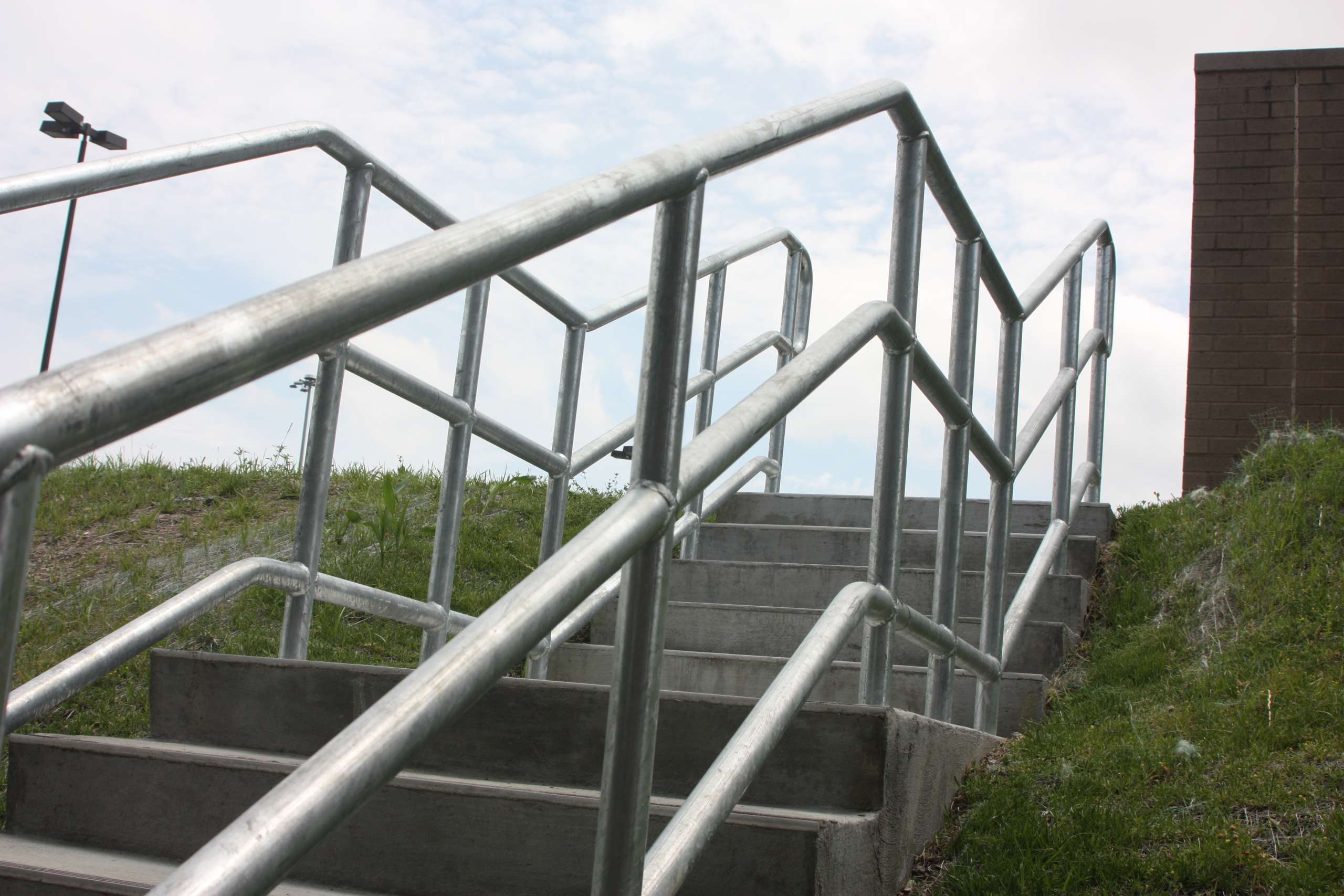NIT Galvanized Rails
These galvanized rails we built and installed at Norfolk International Terminals presented some unique challenges. Right from the start, our project manager identified issues with the step construction that resulted in conditions that would not allow it to pass an inspection. The steps needed rebuilding but unnecessary expenditure on rebuilding rails fabricated for non-compliant steps was avoided.

These galvanized steel safety rails were built and installed to meet or exceed ADA requirements.

Even when design takes a back seat to purpose, CRS applies maximum effort to produce a clean, well made rail.
NIT has an in-house inspector to ensure quality and conformance that exceeds the requirements typically found from local building authorities. Because of this, certain elements, such as the span distances between posts and material weights were above and beyond the normal parameters we encounter from local inspectors.

Clearance between the bottom tread and building entry coupled with ADA requirements meant CRS had to get creative at the base of the stairs.
ADA guidelines state that handrails must extend 12 inches past the lowest tread. Projecting this handrail past the bottom tread to meet code would have blocked the door from completely opening and simply was not an option in this case. Turning it to the side was the solution but it meant we would need to be precise — grab/hand rails need to be within a specific height range at specific points along the treads and landings to conform to codes. We were able to position the bottom post in such a way that allowed us to stay within that range while maintaining the continuity of the rail top without having to use goosenecks or odd drops.

Building a steel pipe rail that is to be dunked in molten metal comes with a list of challenges by itself. Holes must be located specifically to allow heated air and moisture to escape without blowing apart a pipe wall or ripping open welds. It’s imperative that no part of the rails remain sealed before it gets galvanized.
In the end, we provided NIT with a conforming rail that met all applicable codes, guidelines and engineering required by their in-house inspector without any issues. Even through all the hoops and red tape, CRS still turned over a rail that looks as good as it functions.

